|
As I think about what I have learned about excellence in the practice of medicine, I am reminded of a tree and of the lessons which I learned from that tree.
Excellence in medicine is not practiced by the person who knows the most, or even by the person who is the brightest. Excellent medicine is practiced by the person who relentlessly pays attention to details and who consistently completes the mundane, routine tasks which cumulatively result in excellence€¦ I am trying to learn from this tree and I am experiencing how much easier it is to keep up when you stay up than it is to catch up when you start behind. Recently, I have coined a new phase which has become my excellence-in-healthcare- management mantra: I want it done right and I want it done right now. That's what I now require of myself. I invite you to consider it as your motto or mantra as well.
Lessons from a Tree
Let me tell you a story about a tree. It was an ugly tree actually, which is remarkable as I have rarely seen what I judge to be an ugly tree. It stood to the right side as you faced toward the house. It had been there for many years and grass had been allowed to grow up under and around the tree. Various items had been discarded and thrown under the tree, allowing it to become an eyesore in the neighborhood. I know this tree well because it was on the north side of the first house Carolyn and I bought in San Antonio.
It was a beautiful house in a very nice neighborhood. I worked every weekend I was off during my internship and residency in order to supplement my residency salary of $500 a month in order to provide this home for my wife and two children. I would leave San Antonio on Friday afternoon and drive to Bryan, Texas where I worked in the ER until Monday AM. I then drove back to Beaumont at 4:00 AM to start at the hospital by 7:00 AM.
After living in this house for a couple of weeks, "in my spare time," I decided to get rid of this junk heap and this ugly tree. I discarded all of the junk, mowed the grass and began cutting the tree down. Realizing that cutting out the roots was the only way to "get rid" of the tree permanently, I dug down to the tap root. I cut off the root four feet under the ground. I then planted a flower garden on the spot. All of our neighbors began stopping by and commenting about what a beautiful spot that eyesore had become. One of my medical school professors lived across the street and he and his wife often commented about how this effort had improved the neighborhood.
It was only a couple of years after that before we moved to Beaumont. We reluctantly sold that house. I had put a sculptured patio of my own design at the back of our large back yard, put lighting in the beautiful Spanish oaks, planted dozens of roses and made other improvements. We still talk about the "Green House" with pleasant memories. It was almost twelve years before we returned for a visit to San Antonio. The first thing we did was drive by Spanish Oaks, the street on which our house stood. As we drove by, I was shocked. There stood the tree I had cut down, only now it was at least 7 feet taller than it had been when I cut it down.
I learned a life principle from this tree. We can beautify our lives and make them look pretty by removing the obvious clutter but if we don't root out the problems, they will re-grow until they are bigger and "bad-er" than they were in the beginning. Our lives require constant attention in order to be the best we can be. Excellence requires relentlessness in its pursuit. Procrastination, compromise, laxity, slothfulness will all destroy our best intentions.
Application to Medicine - Falling Behind
As I reviewed my work flow and other responsibilities this morning, I realized how easy it is to "fall behind." And, then when we are behind, we become despondent, or forlorn, giving up on any idea of "doing it right." It is not unlike the person who finds themselves morbidly obese with all of the health problems associated. They did not set out to become obese. It just happened. When it started they thought, "Well, I'll stop next week," but two years and 60 pounds later, when "next week" has never come, they rationalize, "this isn't so bad." Before long, 60 pounds has turned into 200 and there is no reason to stop. It takes no imagination, using our weight-gain metaphor to see what happens when a person gets themselves in hand and loses 70 pounds, only to lose their focus and like this tree reach a larger size when their attention and energy are focused on something else.
Relentlessness
Excellence in medicine is not practiced by the person who knows the most or even by the person who is the brightest. Excellent medicine is practiced by the person who relentlessly pays attention to details and who consistently completes the mundane, routine tasks which cumulatively result in excellence.
Interestingly, like our tree, when a health-care provider is "doing it right," it becomes easier to continue doing it right. As a person stays current with reviewing lab, x-rays, telephone messages, correspondence, procedure reports, orders, information and referral requests and a myriad other routine, ordinary and mundane tasks, staying current becomes easier and easier. Conversely, when lab review stacks up; when x-rays accumulate unread; when telephone messages go unanswered; when correspondence, procedures and information requests are not dealt with, like the morbidly obese person who "gives up," it is easy to rationalize that:
- I just don't have the time
- I am too busy
- I have more important things to do
- I am so tired
- This is overwhelming, etc.
I am trying to learn from this tree and I am experiencing how much easier it is to keep up when you stay up than it is to catch up with you stay behind. Recently, I have coined a new phase which has become my excellence in healthcare management mantra: I want it done right and I want it done right now. That's what I now require of myself. I invite you to consider it as your motto or mantra as well.
Signing Off On Laboratory Results
There are a number of reasons for signing off on laboratory results in the EMR:
- It proves that you reviewed the results.
- Results will not be posted to SETMA’s Health Information Exchange and/or to SETMA’s patient portal (NextMD) until signed off.
- The results will not be given to a patient until the provider has signed off on it.
- The results will not appear on the Lab Results template seen below until signed off.
- The results cannot be posted to the current encounter note until signed off.
- A copy of the laboratory results cannot be printed by the provider for the patient.
When the laboratory results have been signed off and when the Lab Results button, outlined in green, is launched, the laboratory work will be aggregated. When the button is clicked an option appears entitled “Document.” When that button is clicked, a document appears entitled “Patient Lab Results,” which can be printed by the provider for the patient.
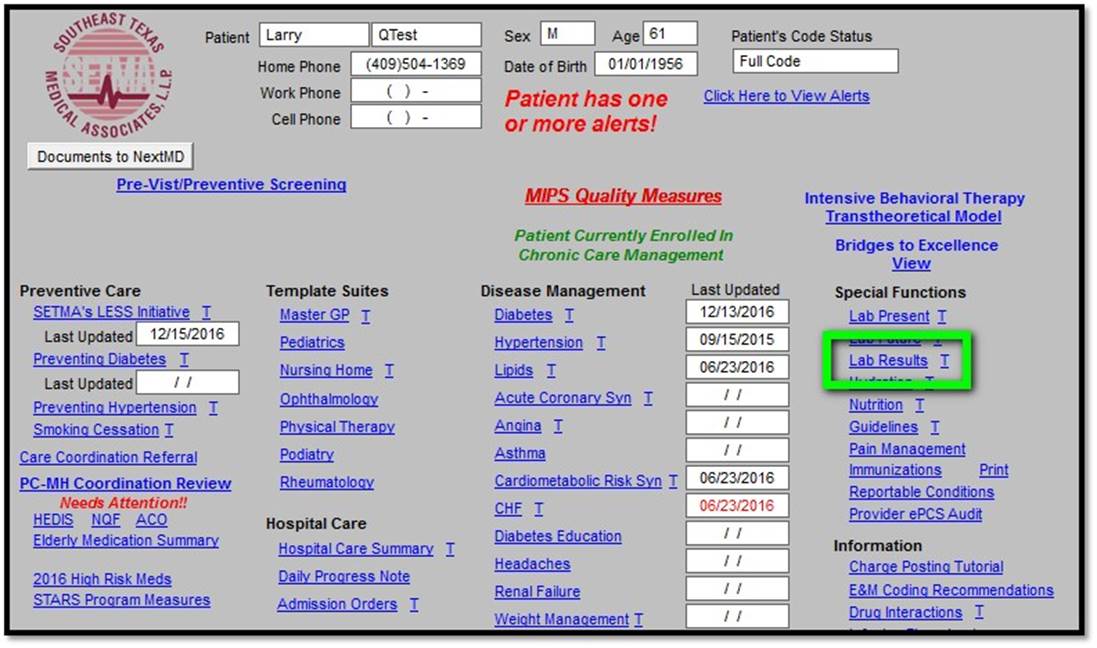
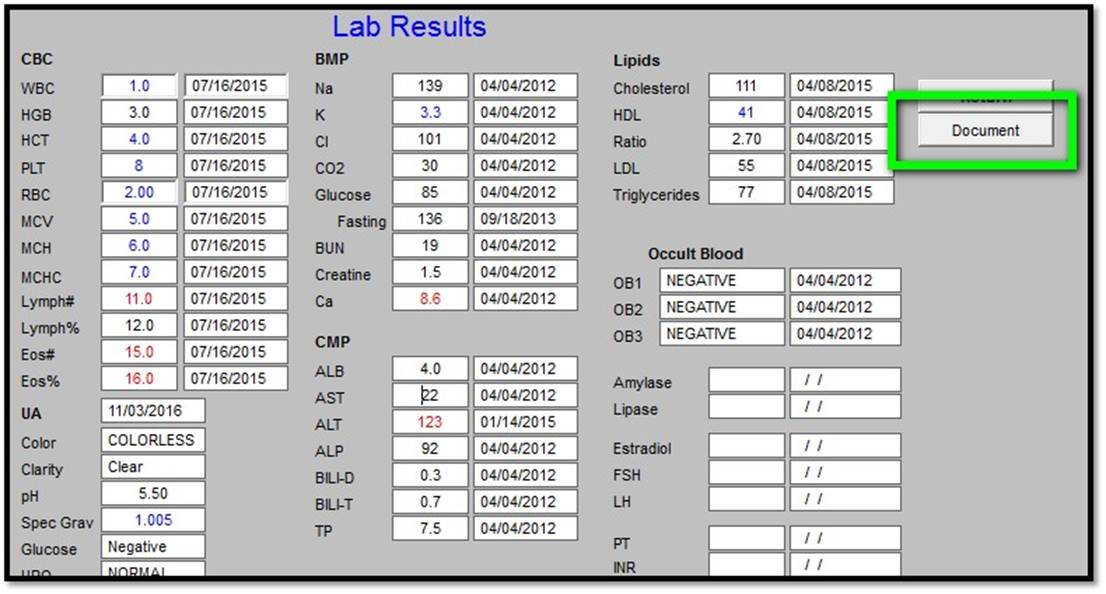
Only the lab results which have been signed off will print on this document or on the chart note.
To sign off on labs, you must complete the steps outlined in the following screens.
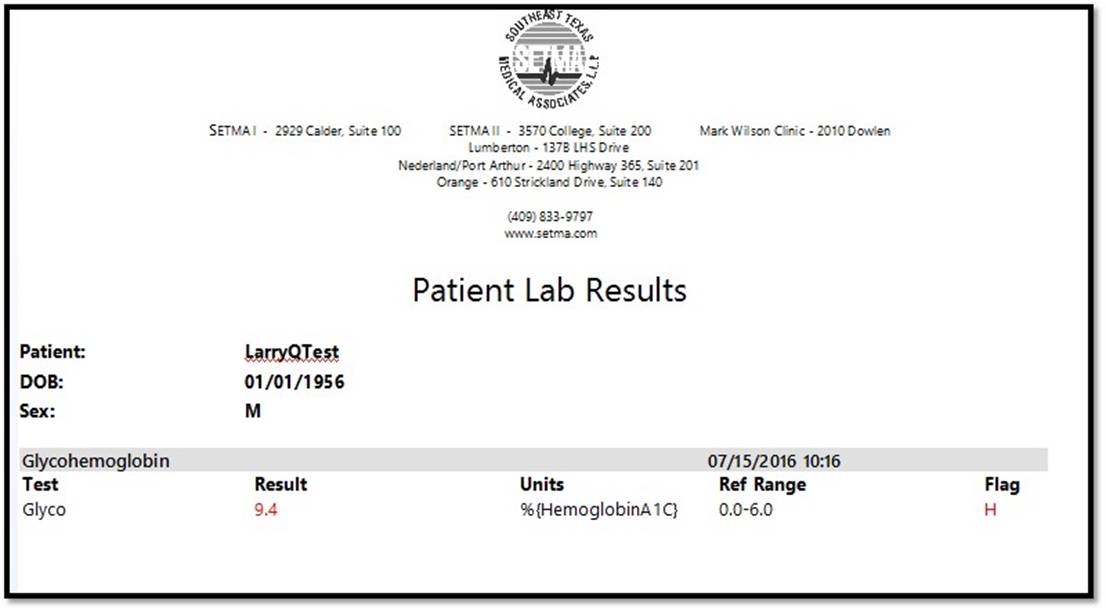
When results are available to sign off on, notice will appear in your workflow. Highlight (click on) the item and then click “Chart” to go to that patient’s chart.
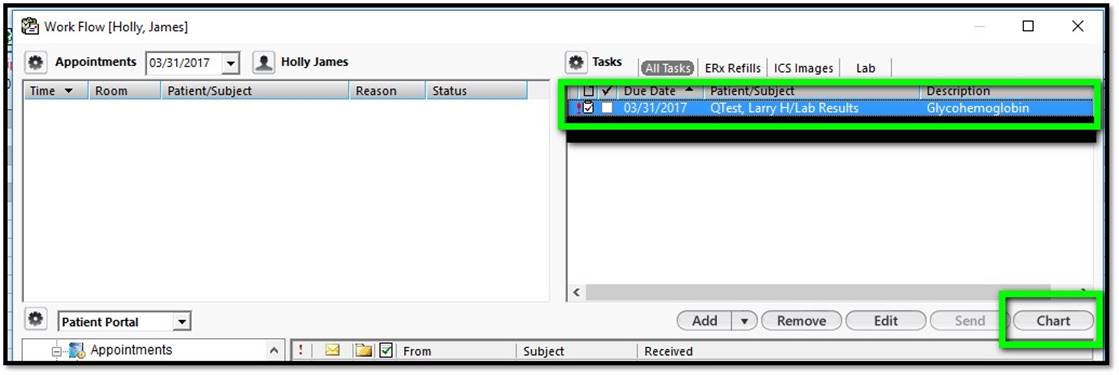
Once you go to the chart, open the “lab module” by clicking the test tubes icon in the lower-right hand corner of NextGen.
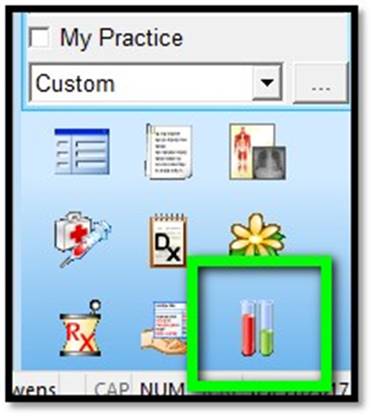
The lab results themselves are displayed in the first tab, named Results.
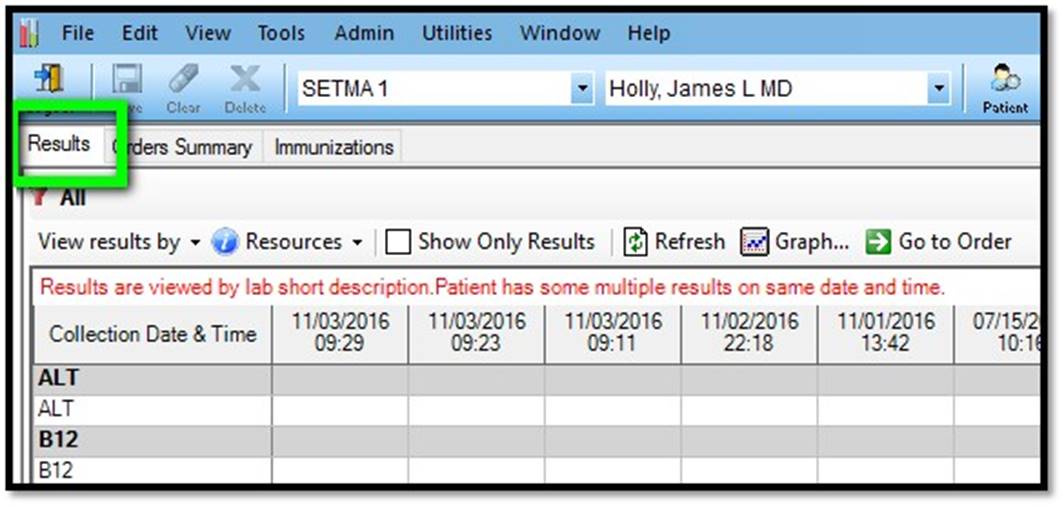
To sign off on the lab results, you must access the second tab which is “Orders Summary.”

When an order has a status of “Assigned” that means the results have been returned from the lab and the order has been assigned back to the ordering provider so that it can be signed-off.

You will want to look at any and all orders that have a status of “Assigned” and they will be highlighted in Red. These are the labs that have not been signed off. They may not always appear at the top as they may be older orders that were inadvertently not signed off.
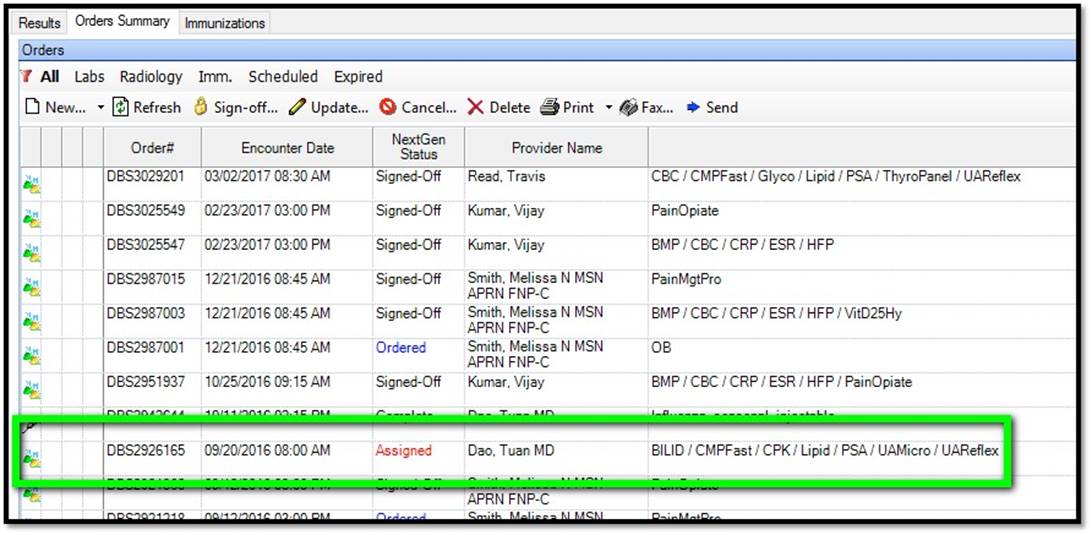
Select the line you want to sign off and then click the “Sign-off” button.

The status will change to “Signed-Off.” This will also automatically remove the associated task notification for your workflow. This completes the sign off with this one click.

You have now signed off on your laboratory results. This prepares you to be able to do the following:
- Create a Patient Lab Results Document described above which can be printed.
- Add the laboratory results to the visit when those laboratory tests were ordered by simply recreating the chart note once you have signed off on the laboratory results.
The elegance of this last step is that if you:
- refer a patient to a consultant or
- give a patient a copy of a chart note or
- your work is audited by an insurance company,
- your work is audited by the state medical board or
- your work is audited by another regulatory agency
it is clear that you have reviewed the lab work because it actually appears on the chart note.
|